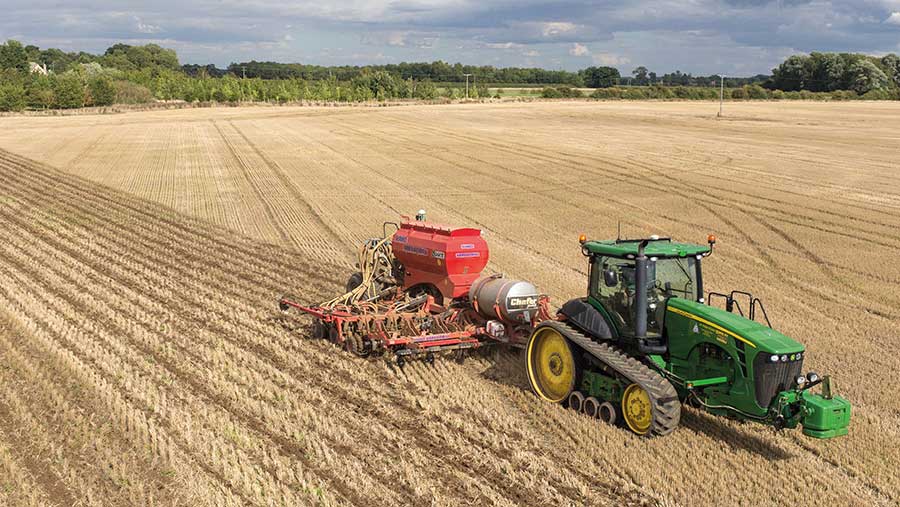Smaller oilseed rape crop looks good with low beetle damage
 © Tim Scrivener
© Tim Scrivener The area of oilseed rape drilled this summer is set to be down on last season, although with good establishment ironically the harvest area next year could well be higher.
This is because what rapeseed has gone into the ground this summer has shown good early growth with little pest damage and so more of the area could survive through until harvest 2021.
Seed trade experts say certified oilseed rape seed sales are down as much as 35% this season, but farm-saved seed could well be higher to offset some of that sharp decline.
Owen Cligg, trading manager at co-operative United Oilseeds, says weather conditions were good for establishment with frequent rain showers, while damage from cabbage stem flea beetle is minimal.
“This season I think the planted area of oilseed rape will be down, but the harvested area will be up,” he tells Farmers Weekly.
See also: The drastic action growers can take to save oilseed rape
Smallest area for over 30 years
Traders say the UK harvested oilseed rape crop area this summer could have been as low as 320,000ha, the smallest for over 30 years. They suggest with a low average yield of 2.7t/ha this will give a crop of below 1m tonnes.
The amount drilled in the summer 2019 could have been towards 450,000ha, but the AHDB Early Bird survey in November estimated it was down at 414,000ha, and in February 2020 at 361,000ha as drought and flea beetle took their toil.
Barry Barker, national arable seed product manager at agronomy group Agrii, says the oilseed rape area is set to fall based on seed sales, which usually account for two-thirds of the area – with the rest made up of farm-saved seed.
“Certified seed sales are running 25-35% lower due to the delayed harvest of winter wheat and spring barley in some areas, and worries about flea beetle,” he says.
Farm-saved seed
Although farm-saved seed’s share of the market may creep up to 40% this season as growers look at cheaper ways of establishment, the total area will still be down. The seed market is split roughly 50-50 between hybrids, which can not be farm-saved, and conventional varieties.
Philip Kimber, commercial grain manager at fellow agronomy group Frontier, agrees that the area drilled will be down as seed sales have been slow, but crops in the ground look good.
He points out there is demand for the output of 600,000ha of oilseed rape to feed the UK crushing industry’s annual capacity of 2m tonnes, and there is need for vegetable oils and protein meal from the crushers.
Variety choice
Seed traders say growers have chosen varieties with early vigorous growth this summer and have often drilled early to try and beat the flea beetle threat, as there are no really effective insecticide treatments available.
Mr Barker at Agrii says his group’s top-selling hybrids have been Ambassador, Exsteel and Invigor 1035, while the top conventional is Aspire.
Beckii Gibbs, United Oilseeds’ seed sales manager, again says seed sales are down, but crops are generally seeing minimal flea beetle damage. Her top sellers are the hybrid Aurelia and conventional Acacia, both of which show strong early growth.
Varieties such as Ambassador, Aspire and Aurelia have the advantage of resistance to turnip yellows virus.
| UK oilseed rape area, yield and production (Defra figures) | ||||
| Year | 2017 | 2018 | 2019 | 2020 |
| Area (ha) | 562,000 | 583,000 | 530,000 | 320,000 |
| Yield (t/ha) | 3.9 | 3.4 | 3.3 | 2.7* |
| Production (m tonnes) | 2.17 | 2.01 | 1.75 | below 1.0* |
*Trade estimates
NOTE: The record area of oilseed rape came in 2012 when 756,000ha was grown, while the highest harvested crop was a year earlier in 2011 when an oilseed rape crop 2.76m tonnes came from an area of 705,000ha and saw the record highest average yield of 3.91t/ha.

